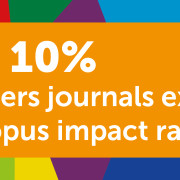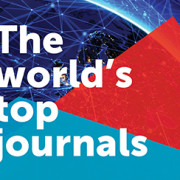- Science News
- Impact analysis
- Journal impact: Frontiers in Physiology
Journal impact: Frontiers in Physiology
Frontiers in Physiology is the world’s 3rd most-cited journal in its field and ranks in the top Impact Factor and CiteScore percentiles

Frontiers in Physiology continues to rank among the world’s top physiology journals in terms of influence and quality, as shown by our analysis of the 2017 Journal Citation Reports (JCR-2017; 2018, Clarivate Analytics), 2017 CiteScore edition (2018, Scopus, Elsevier) and other impact metrics.
The world’s 3rd most-cited journal — and 2nd most-cited open-access journal –in the JCR category of Physiology, with 3,356 citations in 2017 to 1,056 articles published in 2015 and 2016 (Figure 1)
The world’s 3rd most-cited journal — and most-cited open-access journal — in the CiteScore category of Medical Physiology, with 5,775 citations in 2017 to 1,577 articles published in 2014, 2015 and 2016 (Figure 1)
Ranks in the 76th percentile of journal Impact Factors in the JCR Physiology category, with an Impact Factor of 3.394 (Figure 2)
Ranks in the 83rd CiteScore percentile in the Medical Physiology category, with a CiteScore of 3.66 (Figure 2)
4,500 published articles to date
37,800 citations to date
19 million article views and downloads to date
Articles mentioned 950 times in the news to date
Articles mentioned 37,900 times on social media to date

Figure 1: Analysis of the top 10 most-cited journals in the JCR Physiology category (JCR-2017, released in 2018 by Clarivate Analytics) and CiteScore Medical Physiology category (2017 edition, released in 2018 by Scopus, Elsevier). Bar plots show the total number of citations in 2017 to articles published in 2015 and 2016 (JCR) and 2014, 2015 and 2016 (CiteScore), with Frontiers in Physiology in red. A total of 83 journals are listed in the Physiology category in the 2017 JCR edition, of which 7 are Open Access. A total of 94 journals are listed in the Medical Physiology category in the 2017 CiteScore edition, of which 15 are Open Access.

Figure 2: Analysis of Impact Factor and CiteScore rankings in the JCR Physiology category and CiteScore Medical Physiology category. Grey lines represent all journals in each category ranked by their 2017 Impact Factor and CiteScore percentiles, with Frontiers in Physiology shown as a red dot. Impact Factor is the average number of citations received in 2017 to articles published in 2015 and 2016, while CiteScore represents average citations in 2017 to articles published in 2014, 2015 and 2016. A total of 83 journals are listed in the Physiology category in the 2017 JCR edition, of which 7 are Open Access. A total of 94 journals are listed in the Medical Physiology category in the 2017 CiteScore edition, of which 15 are Open Access; however the analysis here includes only those journals with a full three-year publication history, that is, with published articles in 2015, 2016 and 2017.

Scientific excellence at scale
The impressive performance of Frontiers in Physiology — and all Frontiers journals listed in the JCR and CiteScore metrics — reflects the continued success and influence of the Frontiers Open Science model of scientific excellence at scale.
All of this is only possible thanks to our research community and stellar editorial board. Frontiers congratulates Field Chief Editor George E Billman and all Specialty Chief Editors, as well as the diligent work of the Associate and Review Editors, authors and the Frontiers Journal Management team, for this outstanding achievement.







